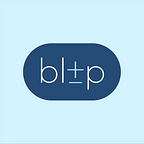October 12, 2020
Dennis Kontorovich
Electricity — it’s a pretty interesting thing. We all know that when we flip on a switch, the lights turn on, but other than that, what do we really know about electricity? Our society deeply depends on it, but most of us don’t really know how it’s made, where it comes from, or even how much it really costs.
Unlike other consumable products, electricity is simple, there is only one kind you can get and only one place you can get it: the grid. The electricity grid is this amazing machine that takes electricity from wherever it’s produced — solar and wind farms, nuclear plants, coal and natural gas facilities — and brings it right into your house so the lights turn on as soon as you flip the switch. This may seem simple, but there is one important thing to consider, which makes electricity different from any other consumable good out there.
Electricity, unlike any other product, must be used as soon as it’s produced because, today, there is no economical way to store it at scale. This means that utilities have to supply exactly the amount of electricity that is being demanded at any given time.
Gas, milk, laptops, etc. are all similar in that once they are produced, they can be transported, stored, and sold whenever is most convenient for the seller. If a grocery store runs out of milk, they simply apologize to their customers and tell them to come back later. Their customers, while potentially frustrated, understand and accept the reality that a grocery store can run out of products. That is not the case with electricity. When you flip a switch, unless there has been a major weather event, you expect the power to come on, no matter what. Your electricity provider can’t say “Sorry, we’re out of electricity right now, please come back later.” This expectation to always have electricity when you want it combined with the fact that electricity needs to be used as soon as it’s produced, makes our electric grid one of the most complex machines humans have ever designed and built. The fact that the lights turn on exactly when you flip the switch is nothing short of a miracle.
So, with all that in mind, how do utility companies handle this perpetual balancing act? They rely on the law of averages and a very large number of customers to estimate, with extremely high accuracy, how much electricity is going to be needed at every minute of every day. Utilities have years of past data on electricity demand, which they use to predict how much electricity will need to be supplied going forward. They know that while they can’t exactly predict when you or I will flip on the lights or turn on our A/C, they can predict how the general population will act at any given moment. To simplify this further, utilities don’t know when one person will require electricity, but they do know when, say 75 out of a 100 people require power, that way if any one person unexpectedly turns on their lights, it’s very, very likely that someone else will turn them off at exactly the right time. That strategy, combined with a little bit of buffer room and wasted electricity, allows utilities to provide 99.99% reliability in their electricity supply.
To summarize, electricity is an extremely complex good that most people just expect to work. Due to the fact that we don’t have energy storage at scale, it needs to be used at almost the exact time that it is produced. This means that utilities have to turn on additional power plants to generate electricity, when demand for electricity is higher than what they had originally planned for. These power plants are called peaker plants and they are more expensive, less environmentally friendly, and produce more local air pollution than power plants that don’t have to turn off and on.
So, why does all of this matter and how does this relate to blip? blip (blipenergy.com) is a residential energy storage company that is trying to democratize energy storage by dramatically lowering its cost, thereby enabling consumers of all incomes to own a storage device. The placement of this device in consumers’ homes will not only save them money by charging when electricity is cheap and discharging when it is expensive, it will also help everyday people contribute to the transition away from fossil fuels by eliminating the need for dirty peaker plants. If energy can be stored in peoples’ homes, utilities have more buffer when balancing supply and demand and are able to lower peak demand, thereby eliminating the need for peaker plants as demand will almost never be higher than what the utility can supply during normal operations.
If you have any questions or wish to inquire further about blip, please contact Hello@blipenergy.com.
